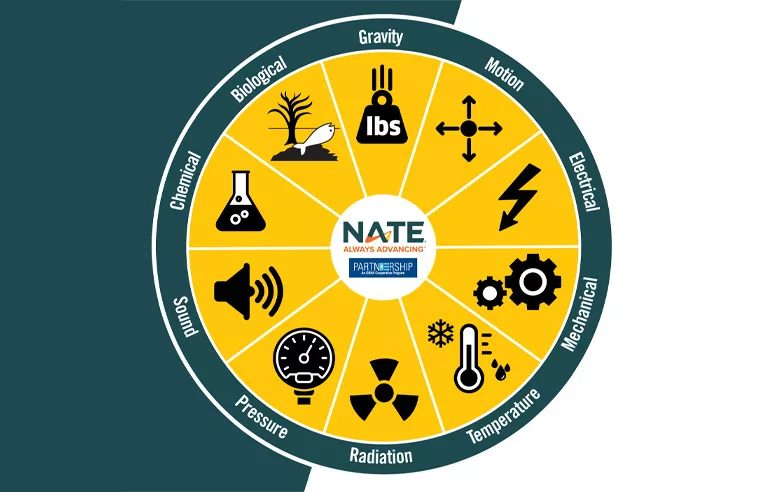
Photo: NATE: The Communications Infrastructure Contractors Association
Watertown, SD — A new safety resource for communication tower workers uses the STCKY (stuff that can kill you) approach to help them identify high-energy hazards.
The guide, published by NATE: The Communications Infrastructure Contractors Association, explores 10 energy sources that can injure or sicken telecommunication workers and offers common examples of each:
- Gravity – work on structures or equipment at height, rigging/lighting, and unstable ground conditions
- Motion – vehicles, machinery and equipment, along with swinging items
- Electrical – tools; exposure to live wires, equipment or electrical shock from other contact sources; batteries; and environmental lighting
- Mechanical – mobile equipment, hand tools and equipment
- Temperature – extreme hot/cold environments
- Radiation – ionizing and non-ionizing radio frequency devices
- Pressure – equipment under pressure; pressure vessels and pipes; and stored energy in components/members, rigging and cables
- Sound – high levels of noise and vibration
- Chemical – toxic, carcinogenic and corrosive chemicals; fibers, dusts, vapors and fumes; sensitizing agents; and hazardous atmospheres
- Biological – contaminated surfaces, soils and workers, as well as wildlife, insects and vegetation
Each entry includes suggestions for direct controls – “the strongest and preferred form of control when dealing with a high-energy hazard” – as well as indirect or alternate controls such as training, signage and personal protective equipment.
NATE says the resource “provides a comprehensive methodology to systematically identify, assess and mitigate hazards by focusing on energy sources present in the workplace.”
McCraren Compliance offers many opportunities in safety training to help circumvent accidents. Please take a moment to visit our calendar of classes to see what we can do to help your safety measures from training to consulting.
Original article published by Safety+Health an NSC publication